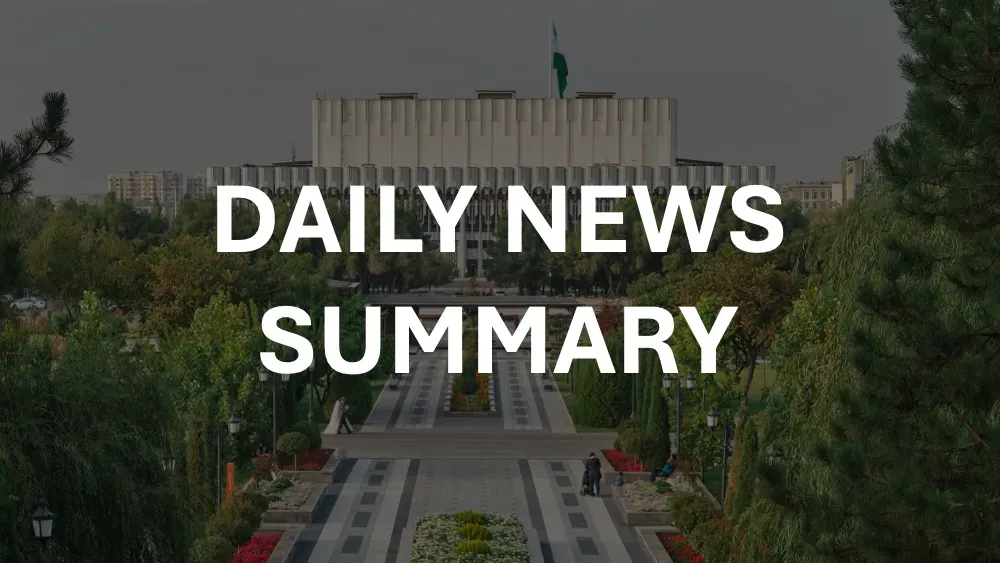📍 Get daily intelligence from Kazakhstan and Central Asia. Lexica News delivers local news that shapes global decisions—synthesized from local sources international media misses.
Kazakhstan's transition from Cyrillic to Latin script represents one of the most significant cultural and administrative transformations in post-Soviet Central Asia. From the initial presidential decree in October 2017 targeting completion by 2025 to the current extended timeline through 2031, this linguistic shift has evolved from an ambitious modernization project into a carefully managed transformation affecting millions of citizens and thousands of businesses. The latest cost estimates from 2018 indicated that Latinization would require approximately $664 million, primarily covering educational initiatives and new textbook printing, with $332 million allocated specifically for teacher training.
Baseline Documentation (2017-2018)
When Kazakhstan announced its alphabet transition in October 2017, the initiative represented the culmination of years of growing discussion about national identity and modernization. President Nursultan Nazarbayev's decree initially established 2025 as the completion target, positioning Kazakhstan as the third Central Asian state after Uzbekistan and Turkmenistan to undertake such a transformation.
The baseline conditions in 2017 reflected a country where Cyrillic script dominated all official communications, with the Kazakh language using this system since 1940. Despite the lack of a finalized alphabet version, many companies quickly changed their names to Latin script, demonstrating immediate private sector enthusiasm for the transition.
The initial proposal featured a 32-letter alphabet with nine characters using apostrophes to represent specific Kazakh sounds. This first version drew criticism from linguists and the public for its visual complexity and typing difficulties. The government established a National Commission to oversee the gradual translation of the Kazakh alphabet into Latin graphics, with responsibilities including organizational and legislative measures for implementation.
Economic expectations in 2017 centered on modernization benefits, with advocates claiming the transition would streamline Kazakhstan's integration into the global economy and enable better access to technologies and scientific innovation. The government projected that Latin script adoption would help position Kazakhstan more effectively within international business and academic communities.
Evolution Analysis (2017-2024)
The transition's early period (2017-2019) was marked by rapid alphabet revisions and growing implementation challenges. The apostrophe-based system faced substantial criticism, leading to a complete revision in 2018 that replaced apostrophes with diacritic symbols including macrons, umlauts, breves, and cedilles. This second version reduced the character count to 31 letters while attempting to address technical typing and display concerns.
A significant inflection point occurred in 2020 when President Kassym-Jomart Tokayev called for another alphabet revision, emphasizing preservation of original Kazakh sounds and pronunciation. This revision, developed by academics from the Baitursynov Institute of Linguistics, introduced spelling changes to more accurately reflect Kazakh phonology and created similarities with Turkish, Azerbaijani, and Turkmen alphabets.
The middle period (2019-2021) revealed growing implementation complexities. Officials warned businesses that had hastily introduced Latin script on outdoor signs and newspapers, stating that "The national commission has not yet made its final decision on the transfer of the Kazakh language into the Latin alphabet. Therefore, it is too soon to use apostrophes in newspapers and other places."
The most dramatic timeline shift occurred in January 2021, when the target completion year moved from 2025 to 2031. This six-year extension reflected the government's recognition of the transition's complexity and the need for more comprehensive preparation across educational, governmental, and business sectors.
Recent developments (2022-2024) have emphasized gradual implementation over rapid change. In 2022, President Tokayev stated that Latinization should not be rushed, adding in 2023 that the project "should not be a mere mechanical switch from Cyrillic to Latin." This represents a fundamental shift from the initial ambitious timeline toward a more cautious, methodical approach.
Technical development has progressed steadily, with keyboard layouts developed alongside the Ministry of Digital Development based on the widely-used QWERTY standard. The diacritical symbols in the current Latin script draft are available in Android and iOS operating systems, addressing earlier concerns about digital compatibility.
Pattern Analysis
Three consistent patterns emerge from Kazakhstan's seven-year transition journey. First, alphabet complexity has steadily decreased through successive revisions, moving from 32 letters with apostrophes to 31 letters with standard diacritical marks. Each revision has prioritized visual simplicity and typing ease over strict phonetic representation.
Second, implementation timelines have consistently extended as practical challenges became apparent. The original 2025 target proved overly ambitious, leading to the current 2031 deadline—a recognition that comprehensive language transitions require generational change rather than administrative decree.
Third, political approach has evolved from enthusiastic modernization toward cautious pragmatism. The leadership change from Nazarbayev to Tokayev coincided with a more measured stance emphasizing gradual implementation and social stability over rapid transformation.
Cyclical patterns have emerged in public engagement, with initial enthusiasm in 2017-2018 giving way to criticism and confusion in 2019-2020, followed by more measured acceptance of the extended timeline after 2021. Business sector adaptation has followed similar cycles, with early voluntary adoption followed by delays pending official clarity.
The correlation between alphabet revisions and implementation delays suggests that technical complexity directly impacts feasibility. Each major alphabet change has been followed by timeline extensions, indicating that consensus-building around the final script version is essential for successful implementation.
Current Trajectory (2023-2025)
Current implementation focuses on gradual institutionalization rather than comprehensive transformation. The phased approach spans 2023-2031, beginning with educational materials and teacher training, followed by government institutions gradually shifting official documents, signage, and communications to Latin script.
Educational sector changes have begun with new materials expected in Latin script and teachers receiving alphabet training. However, comprehensive implementation remains limited, with most schools maintaining Cyrillic-based instruction while introducing Latin script familiarization.
Business impact continues to vary significantly by sector and company size. Multinational companies operating in Kazakhstan are maintaining dual-script capabilities in their systems, recognizing the need to support both alphabets throughout the transition period. The extended timeline to 2031 allows companies more time to adapt databases, user interfaces, and documentation systems.
Government institutions have made limited progress toward Latin script adoption, with most official communications remaining in Cyrillic while preparatory work continues on translation systems and administrative processes. The development of converter programs for translating texts from Cyrillic to Latin represents the primary technical advancement in this area.
Recent regional coordination efforts have intensified, with the November 2023 Organization of Turkic States summit featuring calls for common Turkic alphabet development. This regional dimension adds complexity to Kazakhstan's domestic transition while potentially providing standardization benefits.
Understand Kazakhstan Like an Insider
This analysis draws from extensive research, but the story continues to evolve daily. Lexica synthesizes breaking developments from dozens of Kazakh news sources—from mining policy changes to local protests that never make international headlines.
Our daily intelligence briefs help executives, diplomats, and researchers track:
- Regulatory shifts affecting foreign investment
- Local opposition to development projects before they escalate
- Market dynamics that signal opportunity or risk
- Political developments that reshape the business landscape
Regional Comparison Context
Kazakhstan's transition timeline contrasts sharply with regional precedents in Central Asia. Turkmenistan completed its Latin alphabet transition rapidly in 1993, achieving an almost total shift within a single year under different political and economic conditions.
Uzbekistan's experience more closely parallels Kazakhstan's challenges. Beginning its transition in 1993, Uzbekistan planned completion by 2023 but continues to use both scripts simultaneously across different institutions. Uzbek newspapers can be found with headlines in Latin and articles in Cyrillic, demonstrating the persistence of dual-script periods during extended transitions.
The cost differential is substantial: Kazakhstan's $664 million budget represents a per-capita investment approximately three times higher than Uzbekistan's reported transition costs, reflecting different approaches to implementation comprehensiveness and teacher training.
Business Implementation Challenges
Corporate adaptation has revealed significant sectoral variations in transition readiness. IT companies have adapted most readily, with over 18,600 registered IT companies in Kazakhstan having the technical capacity to support dual-script systems. Manufacturing and traditional industries face greater challenges with legacy documentation systems and worker training requirements.
Document management represents the most immediate business challenge. Legal requirements mandate that contracts and official documents include Kazakh language elements, but the transition period creates uncertainty about script requirements for new documentation. Companies are maintaining parallel documentation systems to ensure compliance flexibility.
Signage and marketing communications have experienced mixed implementation. While recent amendments to visual information laws require signage in Kazakh with optional Russian or other languages, specific Latin script requirements remain unclear during the transition period. Many businesses have adopted Latin script names voluntarily while maintaining Cyrillic signage pending regulatory clarity.
Training costs represent a significant business burden, particularly for companies with large Kazakh-speaking workforces. The government's teacher training budget of $332 million does not extend to private sector employee education, leaving companies to develop internal transition plans and training programs.
Government Administration Evolution
State administration has progressed through distinct phases of Latin script preparation. The initial regulatory-legal framework phase (2018-2020) established legal foundations and commission structures. The current phase focuses on official records including passport and ID preparation alongside teacher and adult population training.
Government document preparation has advanced slowly, with the target of 94 percent of central state and local executive body record-keeping in Kazakh language by 2029. This target encompasses both language use expansion and eventual script transition within government operations.
The development of technical infrastructure has prioritized compatibility over rapid implementation. Keyboard layouts based on QWERTY standards and integration with major operating systems represent the primary technical achievements, enabling broader adoption once official implementation begins.
Inter-agency coordination has improved following early implementation confusion. The establishment of clear commission authority and ministry-level responsibility has reduced conflicting guidance that characterized the 2017-2019 period when multiple agencies provided divergent alphabet information.
Social and Cultural Adaptation
Public reception has evolved from initial enthusiasm through skepticism toward cautious acceptance of the extended timeline. Early corporate adoption in 2017-2018 reflected business sector optimism about modernization benefits, while subsequent alphabet revisions and timeline changes created uncertainty about implementation certainty.
Educational preparation has focused on teacher training rather than comprehensive curriculum transformation. Free Kazakh language training courses in public institutions have expanded to include Latin script familiarization, though comprehensive educational transition awaits finalized implementation schedules.
Generational differences have emerged in adaptation readiness, with younger populations generally more receptive to script change while older citizens express concerns about learning requirements and document accessibility. This demographic dimension influences the government's emphasis on gradual implementation to maintain social stability.
The Russian-speaking minority, comprising approximately 15 percent of the population, has raised concerns about accessibility and integration during the transition period. Government assurances that Russian language will maintain official status have helped address these concerns while recognizing the need for inclusive transition policies.
Conclusion
Kazakhstan's Latin script transition has evolved from an ambitious modernization project into a comprehensive transformation requiring generational patience and systematic preparation. The journey from the 2017 decree targeting 2025 completion to the current 2031 timeline reflects growing recognition of the complexity involved in changing fundamental communication systems across government, education, and business sectors.
Key patterns emerging from seven years of evolution include consistent alphabet simplification through successive revisions, timeline extensions correlating with implementation complexity recognition, and political approach shifts from enthusiastic modernization toward cautious pragmatism. The correlation between technical consensus-building and implementation feasibility has become apparent through multiple alphabet revisions and their associated delays.
The $664 million investment commitment represents one of the largest cultural transformation projects in post-Soviet Central Asia, reflecting Kazakhstan's determination to balance national identity strengthening with practical implementation challenges. Regional comparisons with Turkmenistan's rapid 1993 transition and Uzbekistan's ongoing 30-year process position Kazakhstan's methodical approach as potentially more sustainable than either precedent.
Current trajectory indicators suggest steady progress toward the 2031 target, with educational preparation advancing alongside technical infrastructure development. Business sector adaptation continues at varying speeds across industries, with IT companies leading implementation while traditional sectors adapt more gradually. Government administration preparation focuses on systematic capability building rather than immediate transformation.
The most significant development worth monitoring remains the finalization of alphabet consensus and the beginning of comprehensive educational implementation. Success indicators include teacher training completion rates, business sector dual-script capability development, and public acceptance of the extended timeline approach. The transition's ultimate success will depend on maintaining political commitment across the remaining timeline while adapting to emerging implementation challenges and opportunities.
FAQ
How reliable is the historical cost data for Kazakhstan's Latin script transition?
The $664 million cost estimate from 2018 represents the most comprehensive official projection available, based on educational material development and teacher training requirements. However, this figure predates the timeline extension to 2031 and may not reflect additional costs associated with prolonged dual-script periods, updated technology requirements, or expanded government administration changes. The estimate also doesn't include private sector adaptation costs, which businesses must absorb independently.
What factors caused the biggest changes in implementation timeline?
The timeline extension from 2025 to 2031 resulted from multiple factors: alphabet complexity requiring three major revisions, recognition that comprehensive teacher training needed more time than initially projected, political leadership change bringing more cautious implementation approaches, and growing awareness of social integration challenges. The experience of neighboring Uzbekistan, which has struggled with its 30-year transition, also influenced Kazakhstan's decision to adopt a more gradual approach.
How does Kazakhstan's transition compare to regional patterns?
Kazakhstan's approach differs significantly from regional precedents. Turkmenistan completed its transition rapidly in 1993 under different political conditions, while Uzbekistan has maintained dual-script systems for over 30 years despite multiple completion targets. Kazakhstan's extended timeline and comprehensive preparation budget represent a more methodical approach than either neighbor attempted, though this has resulted in slower visible progress compared to Turkmenistan's rapid implementation.
What methodology changes affect data comparability across the transition period?
Cost projections and timeline estimates have been revised multiple times as understanding of implementation complexity increased. The 2018 cost estimate used different assumptions about completion timing and scope compared to current 2031 projections. Alphabet versions have changed three times, affecting technical implementation requirements and training needs. Business impact assessments have shifted from rapid transformation models to gradual adaptation scenarios, making early projections incomparable to current expectations.
What factors correlate most strongly with implementation changes?
Political leadership transitions correlate with implementation approach changes, particularly the shift from Nazarbayev's ambitious timeline to Tokayev's cautious methodology. Alphabet complexity revisions consistently precede timeline extensions, suggesting technical consensus-building is essential for progress. Regional examples, particularly Uzbekistan's prolonged transition challenges, have influenced Kazakhstan's extended timeline adoption. Business sector feedback on implementation readiness has also contributed to more gradual approaches.
What specific business compliance requirements exist during the transition period?
Current compliance requirements remain primarily focused on Kazakh language use rather than specific script requirements. Signage and documentation laws require Kazakh language inclusion but don't mandate Latin script during the transition period. Companies have flexibility to maintain Cyrillic while preparing for eventual Latin adoption. Government contracts and official documentation continue using existing Cyrillic requirements, with no specific deadlines announced for business sector Latin script compliance.
How do IT system requirements differ for multinational companies versus domestic businesses?
Multinational companies typically have more resources to implement dual-script capabilities in their systems, databases, and user interfaces throughout the transition period. Domestic businesses face greater challenges with legacy system updates and staff training for new script requirements. However, the extended timeline to 2031 provides all businesses more adaptation time compared to the original 2025 target. Technical infrastructure development, including QWERTY keyboard layouts and operating system integration, benefits both multinational and domestic companies equally.
Track Kazakhstan with Local Intelligence
The rare earth story exemplifies why local sources matter. While international media reports MOUs and ministerial visits, Kazakh outlets cover the community protests, water disputes, and regulatory changes that actually determine project outcomes.
Lexica delivers what you're missing:
- Daily briefs at 7AM Astana time covering 40 top stories from politics to economics
- Full-text synthesis from sources in Kazakh
- Searchable archive to track how today's announcements connect to yesterday's promises
- Multi-country coverage across Central Asia for regional context
Whether you're evaluating investment opportunities, monitoring supply chain risks, or analyzing geopolitical developments, local intelligence reveals what international headlines obscure.










